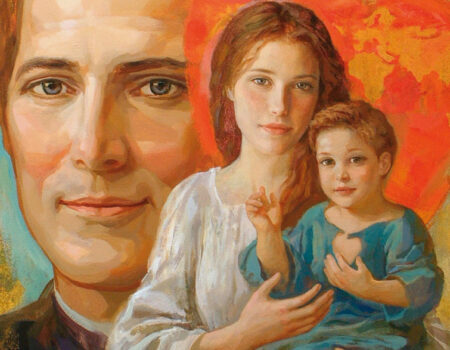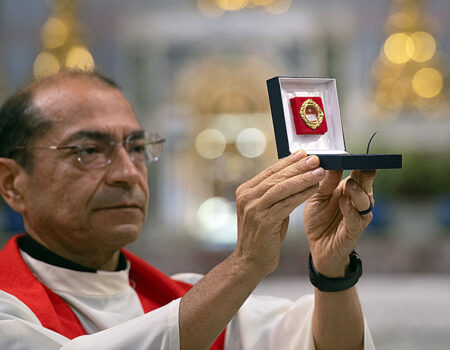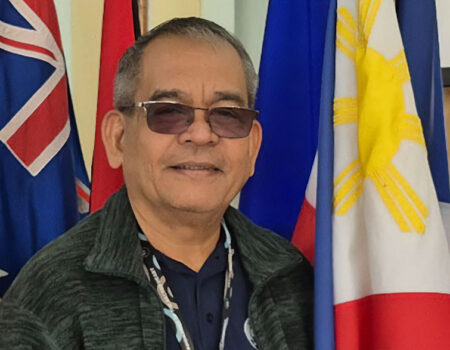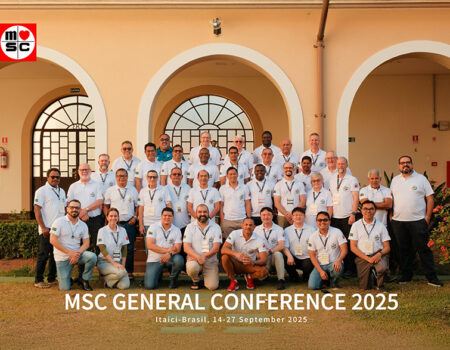Pedro To·Rot, a layman who was martyred for defending family and marriage
Saturday October 11, 2025
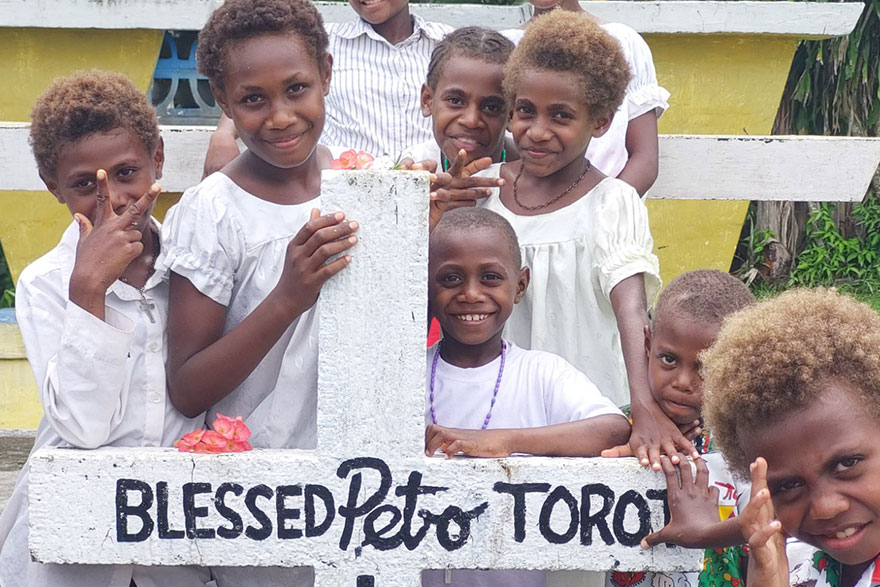
“The figure of the lay catechist from Papua New Guinea, the ‘equipollent’ process of his canonisation, and his legacy for Christians today”, are the themes at the heart of the interview with Father Fernando Clemente, Missionary of the Sacred Heart, postulator of the cause of canonisation of Pedro To·Rot.
Collaboration with Vatican News.
On 31 March, the Holy See Press Office announced that Pope Francis has authorised the Dicastery for the Causes of Saints to promulgate decrees for three new saints, one blessed and one venerable. Among them is the layman Pedro To·Rot, from the island of Rakunai – Rabaul in Papua New Guinea.
To learn more about the life of this catechist who lived in the last century and was martyred for having continued his apostolate despite the ban imposed by the Japanese during the Second World War, Vatican News spoke to the postulator of his cause for canonisation, Father Fernando Clemente, Missionary of the Sacred Heart, who highlighted three elements of his legacy for Christians today: “His martyrdom, the role of the laity in evangelisation and the defence of marriage and the family”.
How did you receive this news in the Congregation of the Missionaries of the Sacred Heart? And what is the significance of this announcement?
In our Congregation we have received the news with immense joy, because we have been carrying the cause for many years. For us, Blessed Peter To·Rot is a very inspiring figure for the whole Congregation, for all of us, and he is the result, and this makes it even more special for us, because he is the result, the fruit, of the first mission of the Congregation, when we arrived there, in Papua New Guinea, in 1882. It is the fruit of this missionary attitude of ours, of the Congregation. So, it is a reason for great joy.
On 18 March 2024, the Bishops of Papua New Guinea and the Solomon Islands requested the dispensation of the miracle on the way to the canonisation of Peter To·Rot. In fact, the Decree published on 31 March does not speak of a miracle attributed to the Papuan layman, but of “favourable votes” by the members of the Dicastery for the Causes of Saints. What kind of canonisation are we talking about in this case?
In fact, the process is a bit different from what we are used to. In general, we know that for a cause of canonisation we have to have a recognised miracle, in other words, that doctors, doctors, health professionals can affirm that this cure, this healing, has no scientific explanation. The thing is that the situation in Papua New Guinea forced us to take a different path, precisely because of the difficulty of finding health professionals who could help us, there are few hospitals there. In some of them we encountered difficulties with the doctors, with the doctors, because they are of a different religion and do not accept to be witnesses to a cause like this.
Moreover, although there are many stories of miracles, of graces received through the intercession of Blessed Peter To·Rot, many of them do not know how to write. So, as they simply cannot speak, it is an eminently oral tradition. So, given all these situations, the bishops there asked the Holy Father for the grace to be dispensed from the need to prove a miracle, but there is the fame of sanctity, the fame of martyrdom, the fame of signs, but, given these situations, we asked the Holy Father for the grace to do this process differently.
From 6 to 9 September 2024, Pope Francis visited PNG on one of the longest Apostolic Journeys of his pontificate. And in his meeting with the Papuan Church, he was asked to intervene in the process of canonisation of this catechist and martyr. How much did the Holy Father’s trip to this country influence this process?
I believe that the Church in Papua is a very lively Church, even if there are some difficulties, it is still an extremely missionary Church. It is true that there are many challenges there, but the Pope’s visit was really an encouragement, a boost for the whole Church on the island. And looking at the reality in Papua, and then in Timor, which are very similar realities, the Pope was convinced of the validity of the Bishops’ request. Moreover, I believe that the Pope, by also looking at the faith of the people, the faith they have in Blessed Peter To·Rot, helped him to be convinced that it was a valid request.
What is the relationship of this lay catechist with the Missionaries of the Sacred Heart? And what is the legacy that this martyr leaves us for Christians today?
I believe that to understand a little of the Blessed’s relationship with our Congregation we have to go back in history. These islands, what we call Melanesia, the Pope asked us in 1882 to go as missionaries there and it was a time when our Congregation was just beginning. The Congregation was founded in 1854 and we had few members, but the founder decided to send missionaries there. As we were few at that time we had to rely on the invaluable help of the lay people there. So Pedro To·Rot became a catechist, he began to study, he did a whole process and he was like the right hand of the priests who were there. Much of the evangelisation of Papua New Guinea is due to the laity. When in 1945 the Japanese invaded the island and banned the activity of the priests – I speak a little bit jokingly, but a little bit seriously too – that Pedro To·Rot became the parish priest of his village and continued with the baptisms, continued preparing the people. When the Japanese started at that time to try to reintroduce polygamy, he strongly opposed it and that was one of the reasons for his death.
So, I would say there are three things that we have as a legacy from Pedro To·Rot. The first thing was his martyrdom. When he was martyred he was 33 years old, he was quite young. I think his way of life, his martyrdom is a call also to all young people to dedicate themselves to the Gospel, to dedicate themselves to evangelisation, in their own way according to their way of life. He was a layman, and this is the second thing, a family man. Being a layman, he knew how to exercise a leading role in his vocation, Pope Francis today speaks to us so much about a less clerical Church. And finally, his martyrdom was mainly due to his defence of marriage. So, I believe that in this time when marriage is under such attack, this is also part of his legacy, the defence of the values of the family and of marriage.


